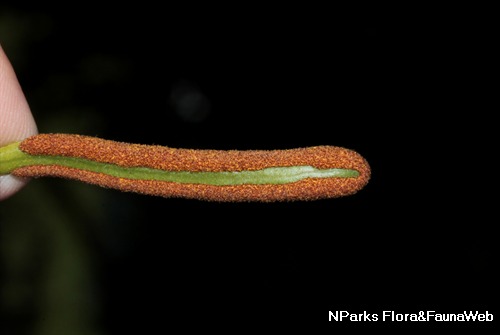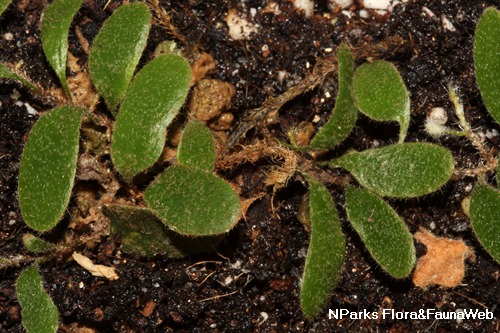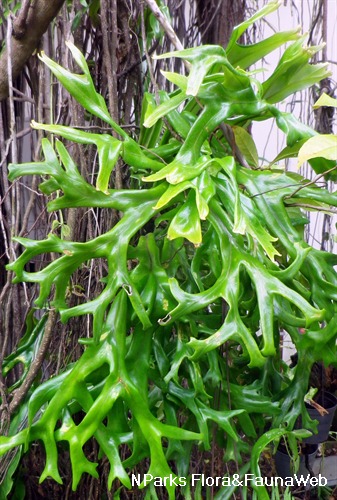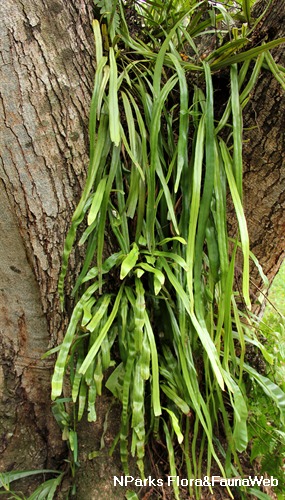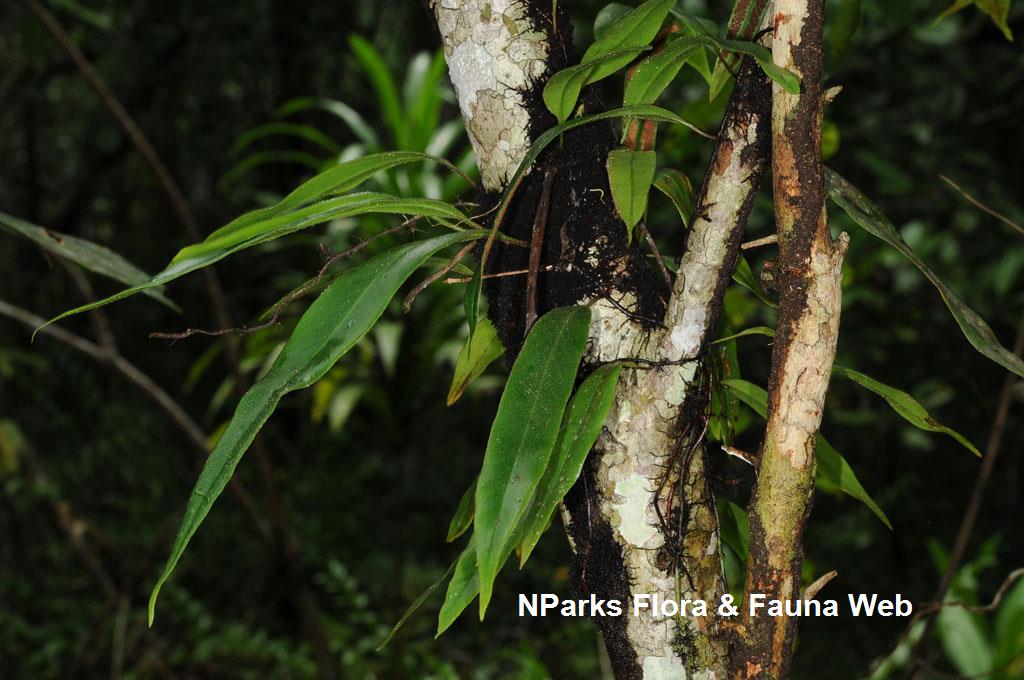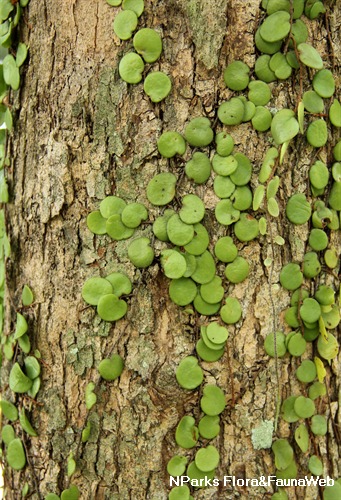
Back
Pyrrosia piloselloides (L.) M.G. Price
| Family Name: | Polypodiaceae |
| Synonyms: | Pyrrosia nummulariifolia auct. non (Sw.) Ching, Drymoglossum piloselloides (L.) C.Presl, Drymoglossum piloselloides (L.) C.Presl var. platycerioides Teruya <2> |
| Common Name: | Dragon Scales, Sakat Ribu-Ribu, Sisek naga, Pakis Duitan, Dragon's Scale Fern, 抱树石韦 |
Pyrrosia piloselloides or Dragon Scales is a native epiphytic fern in Singapore. As most Pyrrosia species, the fronds are covered in pale star-like hairs. Dragon Scales has dimorphic fronds where the sterile fronds range from oval to circular and narrow linear fertile fronds. The sori are produced in a thick band continuous near the margins of a fertile frond. The rhizomes are long-creeping covered in oval scales with a brown centre and pale hairy margin.
Name
Classifications and Characteristics
| Plant Division | Ferns & Lycophytes (Non-Seed Vascular Plants) (Fern) |
|---|---|
| Plant Growth Form | Epiphyte, Lithophyte |
| Lifespan (in Singapore) | Perennial |
| Mode of Nutrition | Autotrophic |
| Maximum Height | 3 cm to 5 cm |
Biogeography
| Native Distribution | Northeast India to China (Hainan), Malesia |
|---|---|
| Native Habitat | Terrestrial (Primary Rainforest, Secondary Rainforest) |
| Preferred Climate Zone | Tropical, Sub-Tropical / Monsoonal |
| Local Conservation Status | Native to Singapore (Least Concern (LC)) |
Description and Ethnobotany
| Growth Form | It is a epiphytic fern with long-creeping rhizomes, sometimes found growing on the surface of rocks. |
|---|---|
| Foliage | Fronds are simple, dimorphic and fleshy covered in sparse pale star-like hairs. Sterile fronds are variable, from oval, circular, ovate and oblong with smooth margins about 1-2 cm wide, flat against the surface. Fertile fronds are narrow, linear, 2.5 - 25 cm long by 0.3 - 1.5 cm wide, with a short stalk up to 1 mm long. |
| Reproductive Parts - non-flowering plant | The sori are produced in a thick band, continuous along the margin, to the base of the blade or restricted to the tips only. |
| Others - Plant Morphology | The rhizomes are slender, long-creeping, about 1 mm wide covered in scales. The scales are oval, with a brown centre and paler margin that are hairy (ciliate). |
| Habitat | Occus in all types of primary, secondary vegetation, frequently on street trees. <1> |
| Etymology | Genus Pyrrosia means "fire-coloured". Species piloselloides means "hawkweed-like". |
| Ethnobotanical Uses | Medicinal: The fronds are pounded and mixed with gypsum to make a poultice for skin rashes. |
Landscaping Features
| Desirable Plant Features | Ornamental Foliage |
|---|---|
| Landscape Uses | Parks & Gardens, Small Gardens, Vertical Greenery / Green Wall |
Fauna, Pollination and Dispersal
| Seed or Spore Dispersal | Abiotic |
|---|
Plant Care and Propagation
| Light Preference | Semi-Shade |
|---|---|
| Water Preference | Moderate Water, Little Water |
| Plant Growth Rate | Fast to Moderate |
| Rootzone Tolerance | Moist Soils, Shallow Media |
| Propagation Method | Spore, Stem Cutting, Division |
Foliar
| Foliage Retention | Evergreen |
|---|---|
| Mature Foliage Colour(s) | Green |
| Foliar Type | Simple / Unifoliate |
| Foliar Attachment to Stem | Sessile, Petiolate |
| Foliar Shape(s) | Non-Palm Foliage (Oval, Oblong, Orbicular / Round, Ovate) |
| Foliar Venation | Recticulate |
| Foliar Margin | Entire |
Image Repository
Others
| Master ID | 275 |
|---|---|
| Species ID | 1571 |
| Flora Disclaimer | The information in this website has been compiled from reliable sources, such as reference works on medicinal plants. It is not a substitute for medical advice or treatment and NParks does not purport to provide any medical advice. Readers should always consult his/her physician before using or consuming a plant for medicinal purposes. |

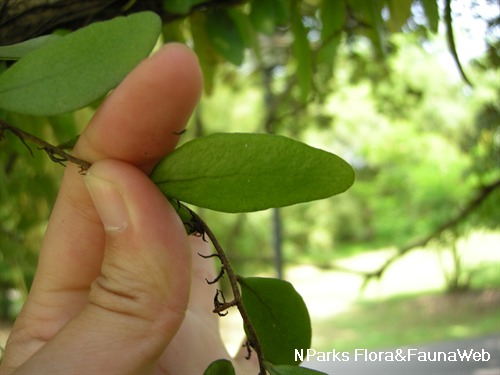
.jpg)
.jpg)
.jpg)
.jpg)
.jpg)
